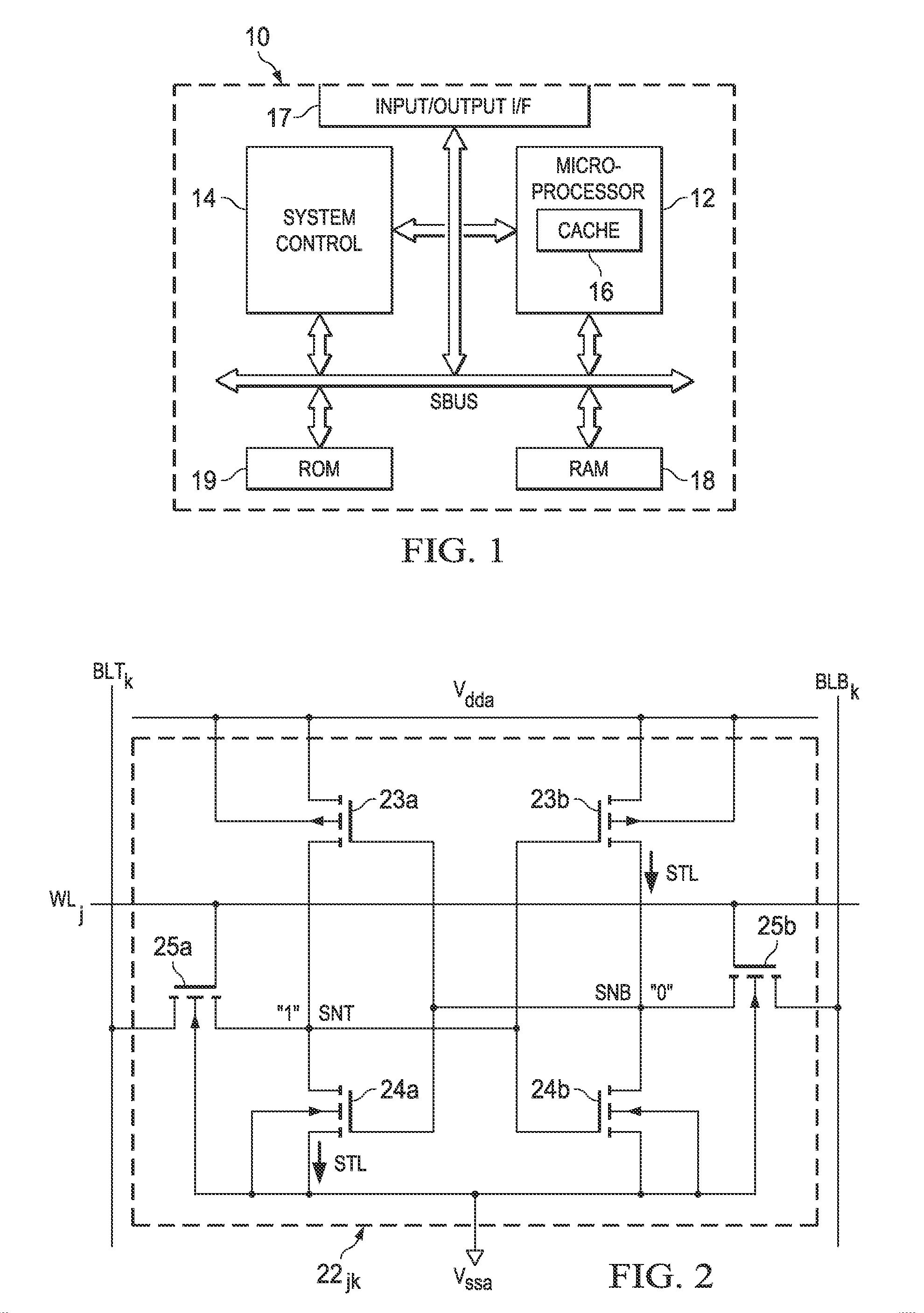Low Power Retention Random Access Memory with Error Correction on Wake-Up
a random access memory and wake-up technology, applied in the field of solid-state memory, can solve the problems of increasing test time, increasing power consumption during operation, and complicating the routing of conductors in the integrated circuit realization, so as to reduce power consumption in data retention mode
- Summary
- Abstract
- Description
- Claims
- Application Information
AI Technical Summary
Benefits of technology
Problems solved by technology
Method used
Image
Examples
Embodiment Construction
[0026]This invention will be described in connection with its embodiments, namely as implemented into a static random access memory (SRAM) architecture, for example as embedded within a larger-scale integrated circuit, because it is contemplated that the invention is beneficial when utilized in such an application. However, it is also contemplated that embodiments of this invention can provide important and significant advantages if applied to other types of read / write solid-state memory, and to such memory when implemented as stand-alone integrated circuits or embedded in other architectures. Accordingly, it is to be understood that the following description is provided by way of example only, and is not intended to limit the true scope of this invention as claimed.
[0027]FIG. 1 illustrates an example of large-scale integrated circuit 10, in the form of a so-called “system-on-a-chip” (“SoC”), as now popular in many electronic systems. Integrated circuit 10 is a single-chip integrate...
PUM
 Login to View More
Login to View More Abstract
Description
Claims
Application Information
 Login to View More
Login to View More - R&D
- Intellectual Property
- Life Sciences
- Materials
- Tech Scout
- Unparalleled Data Quality
- Higher Quality Content
- 60% Fewer Hallucinations
Browse by: Latest US Patents, China's latest patents, Technical Efficacy Thesaurus, Application Domain, Technology Topic, Popular Technical Reports.
© 2025 PatSnap. All rights reserved.Legal|Privacy policy|Modern Slavery Act Transparency Statement|Sitemap|About US| Contact US: help@patsnap.com



